Jory: Trust and transparency will help tell a better story about aquaculture
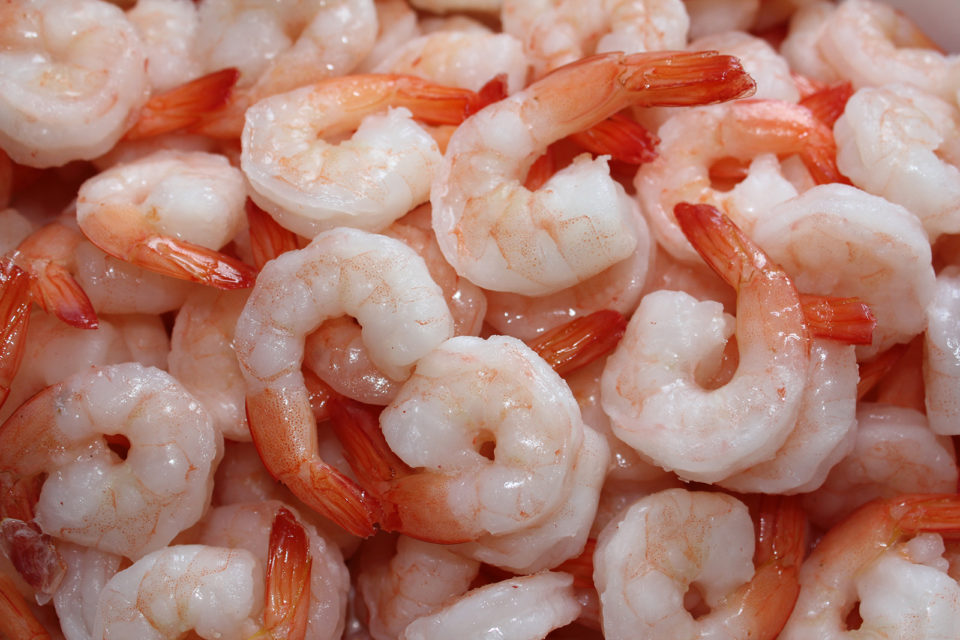
Aquaculture has a truly great story to tell and a major role to play in producing the food needed to sustain our growing global population. We simply need to tell that story better because the industry’s opponents are telling a different version. Aquaculture has withstood constant media criticism for many years as a result of misinformation, or worse, because of agendas (from said opponents) to villify the industry.
As a result, some consumers have formed strongly rooted, negative perceptions about farmed seafood, that are typically based on emotional, one-sided arguments and not solid scientific facts. One of our jobs is to help reform consumer perception by reinforcing the many positive benefits the industry provides for our health, for our economies and for our environment.
Farmed fish makes sense for our bodies
The health benefits of eating a seafood-rich diet are well-documented, and supporting arguments continue to be published. Seafood is a nutrient-rich food that is a good source of lean protein, vitamins and minerals. Many seafoods provide essential nutrients for a healthy metabolism and cardiovascular health; to reduce the risk of heart attacks, strokes and arrhythmia; for cell, bone and muscle growth and maintenance, energy production and calcium absorption; for good overall vision and improved night vision, and protection against age-related macular degeneration; and for reproductive and immune systems support.
Regular consumption of seafood has also been shown to help alleviate the symptoms of chronic diseases, including various allergies and rheumatoid arthritis, and it may lower the risks of depression and of developing Alzheimer’s . Seafood consumption can help preserve skin moisture and alleviate the incidence of acne.
Seafood is very important for pregnant women, and studies have shown the significant benefits on baby birth weight by improving fetal development and growth and aiding in reducing preterm delivery. Developing infants and children, in addition to essential nutrients and protein, need omega-3 fatty acids to support proper brain development and cognitive function.
It has become common to get daily recommended dosages of omega-3 fatty acids in fish oil capsules, but the consumption of seafood is regarded as the best way to obtain these incredibly important fatty acids.
Finally, seafood is not boring – there are hundreds of varieties that can be prepared in virtually limitless ways.
Farmed fish makes sense for our communities
Farmed seafood production is an important driver in many nations’ economies. It supports employment, rising standards of living and hard currency generation for millions of people around the world.
There are many businesses along the farmed seafood production and marketing value chain, including broodstock and seedstock production centers; grow-out facilities; processing and aquafeed manufacturing plants. There are also countless suppliers of equipment and consumables; frozen storage and transportation providers; marketers, wholesalers and retailers; R&D and testing laboratories; and many other components of the value chain.
Investors – historically wary of aquaculture – are realizing the potential for investing in the industry and its related services. The number of venture-backed aquaculture investments is growing. All these businesses – and their employees, shareholders and ancillary industries – benefit from increased consumer awareness of the benefits of seafood consumption.
Farmed fish makes sense for the environment
Finally, because of numerous advances in the technologies used to produce farmed seafood, aquaculture generally has a smaller environmental footprint and uses fewer natural resources than most of its terrestrial, meat-producing counterparts. And a growing awareness for the environment has resulted in responsible aquaculture practices and certification programs, so that farmed seafood production can be carried out in an environmentally sustainable manner.
For many years, yields from wild capture fisheries have remained relatively flat while global demand for seafood continues to increase. It is widely believed that aquaculture is the only way to produce more seafood for a growing global population. The Marine Ingredients Organisation believes that stocks of fish utilized mainly by fishmeal and fish oil manufacturers are among the best managed globally. From IFFO:
“Good quality raw material is fundamental to the production of high quality fishmeal and fish oil. Raw material comes from capture fisheries (generally small, pelagic fish species) and, increasingly, byproduct such as fish trimmings from the processing sector … Often there are no direct human consumption markets for these species, and they support production of protein for which there is a very real demand, as well as fish oil which is used directly to achieve benefits for human and animal health.”
So, how to better tell our great story?
At Aquaculture America 2016, Dr. James Anderson – director of the Institute for Sustainable Food Systems and Professor, Food and Resource Economics at the University of Florida (and well-known to GOAL attendees for his shrimp production presentations) – reinforced the need to educate consumers about aquaculture, and how to reframe the message they’re being sent. And it starts with recognizing what aquaculture’s true competition is, and it’s not wild-caught seafood.
Anderson stressed that aquaculture has many advantages when compared to other animal protein-producing industries: lower environmental impacts, more efficient use of resources, low levels of waste and a reliable and consistent production that can be traced and certified.
For credible, science-based facts, look at feed conversion ratios (FCR) for carps, shrimp, tilapia, catfish and Atlantic salmon in comparison to chicken, beef, pork and eggs. Regarding water efficiency, Atlantic salmon, tilapia and channel catfish perform far better than beef, pork, poultry and eggs (Fig. 1).
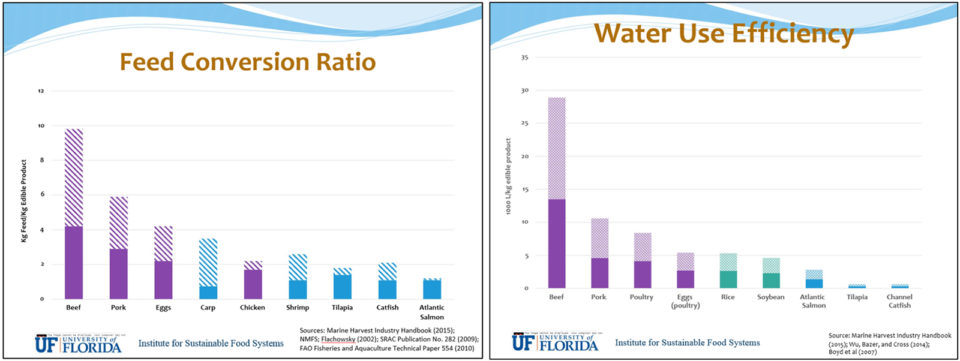
Salmonids, bivalves and prawns compared favorably to chicken with regards to emissions of nutrients like nitrogen and phosphorus. And with regards to greenhouse gas emissions, farmed Atlantic salmon, various canned fish and shellfish, fresh and frozen fish compare favorably to eggs and poultry, and far outpace lamb, pork, veal and beef (Fig. 2).
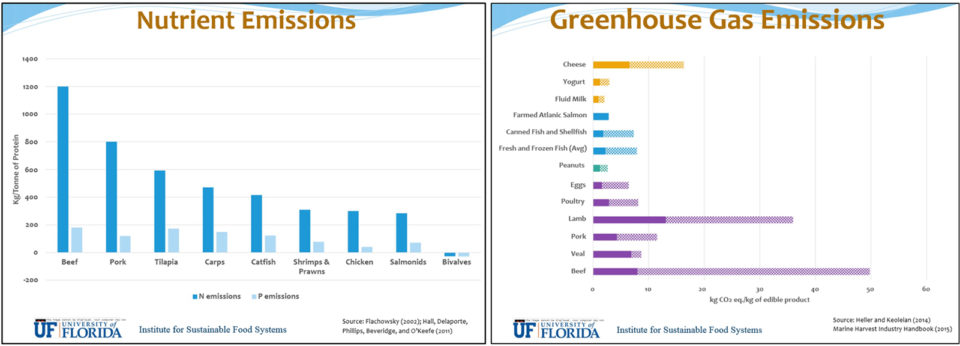
In telling the aquaculture story with well-grounded and supported facts, we also need to be transparent, trustworthy and responsible. A few years ago, the Global Aquaculture Advocate ran an excellent article by Rebecca Priebe (“Selling Farmed Fish In A Wild Market,” Nov-Dec 2014 issue).
https://www.aquaculturealliance.org/advocate/selling-farmed-fish-in-a-wild-market/
Priebe stated that “effective marketing of farmed seafood faces a number of hurdles not found in other industries. Many consumers have preconceived notions that farmed fish cannot taste good and comes from an environment not conducive to producing high-quality, flavorful food. Being as transparent as possible and practicing responsible aquaculture can increase consumers’ knowledge and provide confidence.”
Priebe proposed that the aquaculture industry should work collectively to make consumers appreciate that fish farming is the new way to produce healthy protein and concluded: “As this industry grows further, let us strive to cooperate in educating the public by promoting the image of good fish farms and the high-quality products they produce.”
All aquaculture stakeholders must help to help change the negative, emotional perceptions about farmed seafood using credible, science-based facts, transparency, trustworthiness and responsibility. Let’s also start from within and strive for better communications among all the stakeholders throughout the farmed seafood value chain we are all part of.
Author
-

Darryl E. Jory, Ph.D.
Editor Emeritus
Global Aquaculture Alliance[103,114,111,46,101,99,110,97,105,108,108,97,101,114,117,116,108,117,99,97,117,113,97,64,121,114,111,106,46,108,121,114,114,97,100]
Tagged With
Related Posts
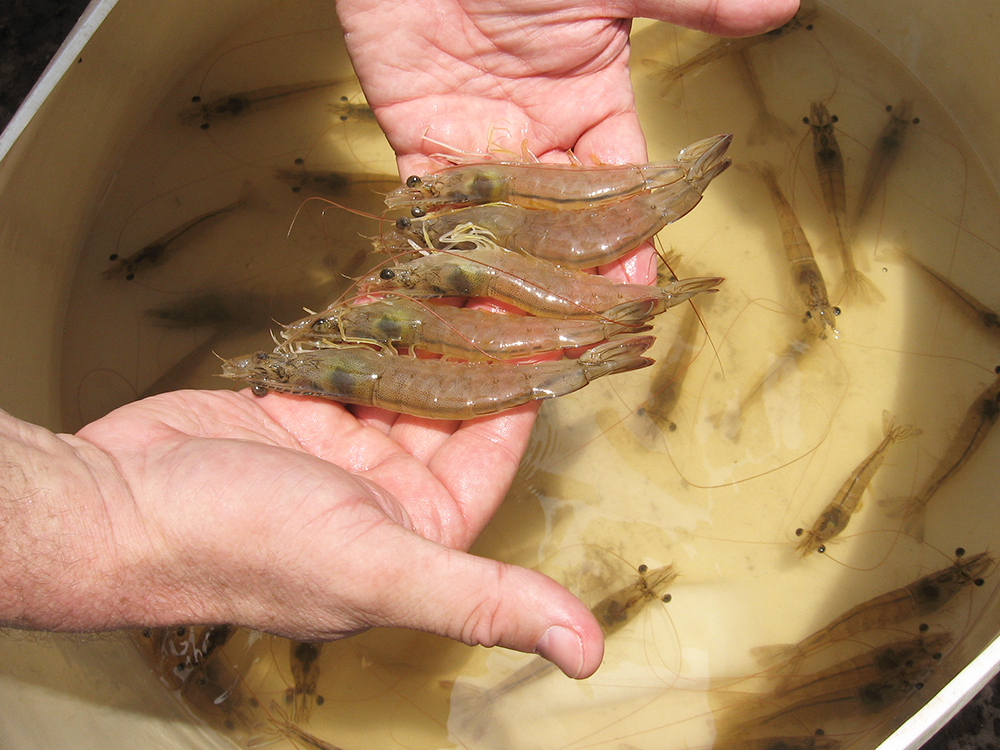
Intelligence
We can grow better shrimp, and in better ways
The recent Central American Aquaculture Symposium in Choluteca, Honduras, brought together more than 600 participants to discuss industry issues and perspectives. The focus was shrimp diseases and their impacts on production, as well as practical alternatives to face these issues and move forward.
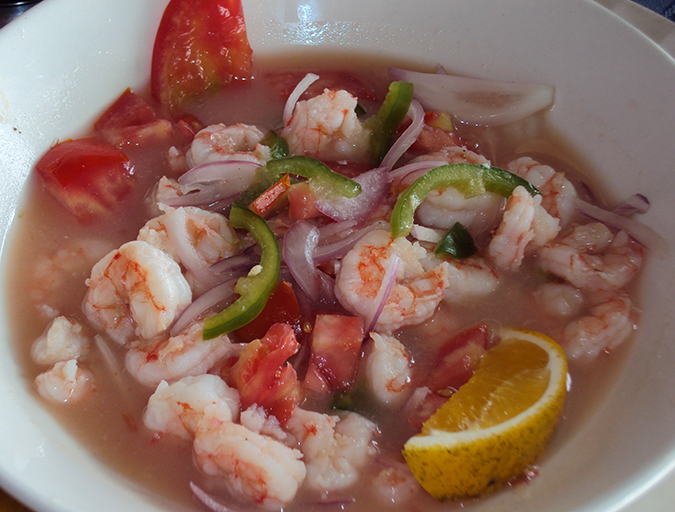
Intelligence
Facts about shrimp and cholesterol
Many people, including health-conscious consumers, are concerned about the cholesterol content of foods such as meat, eggs and dairy products. In the case of shrimp, the cholesterol story is different because a number of research studies have demonstrated that the high percentage of “good fats” in shrimp reduce the impact of cholesterol, and that a majority of people can eat shrimp as part of a balanced diet.
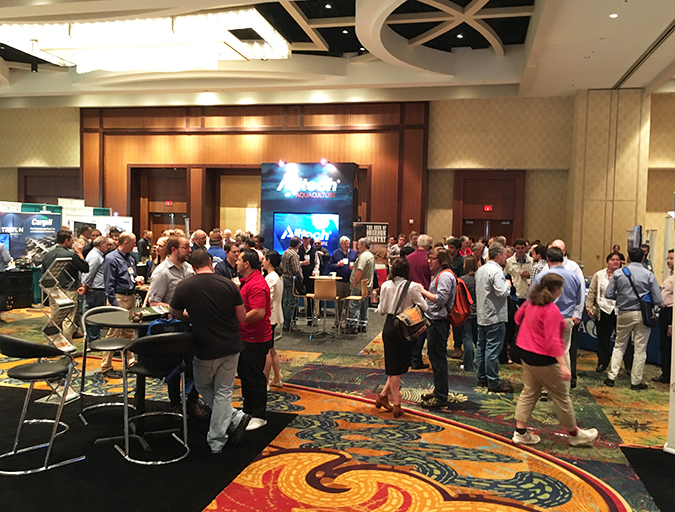
Innovation & Investment
Aquaculture America 2017: Communication key to the future
This year’s Aquaculture America in San Antonio, Texas, provided significant learning and networking opportunities. It successfully brought together 14 U.S. aquaculture organizations and more than 1,600 participants from Europe, Asia, Africa and Australia.
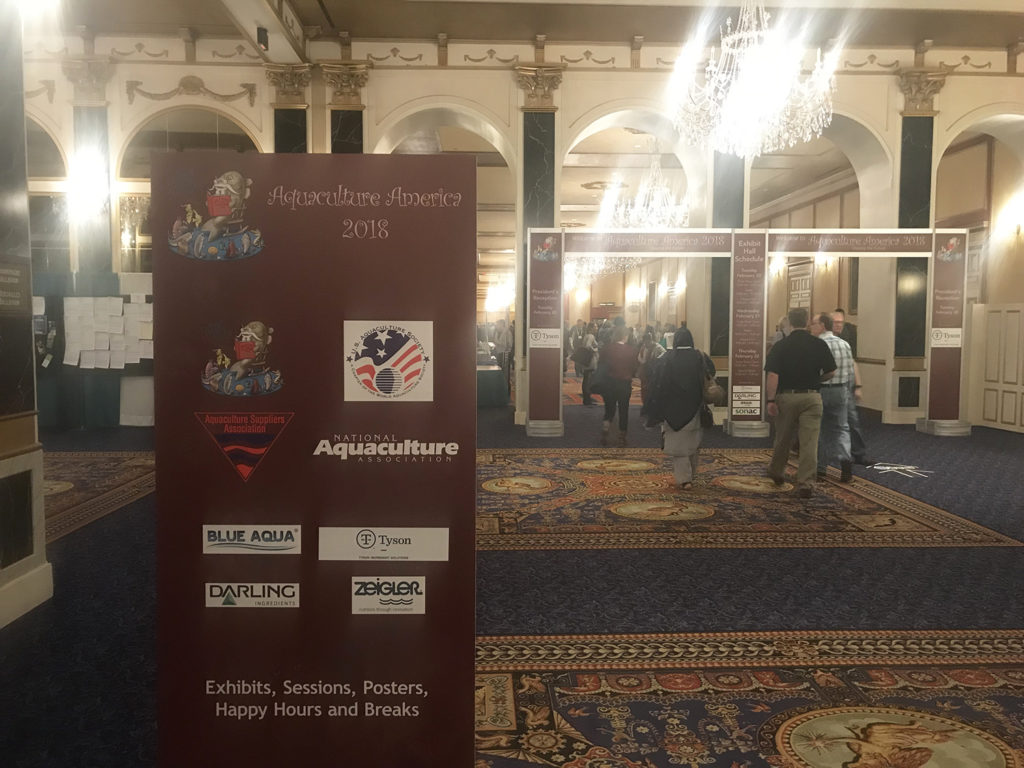
Innovation & Investment
At Aquaculture America 2018, signs of support for thriving domestic industry
Aquaculture must reshape its public narrative in order for the blue revolution to transpire. That’s what many prominent voices were saying at the World Aquaculture Society’s annual U.S. conference in Las Vegas.

